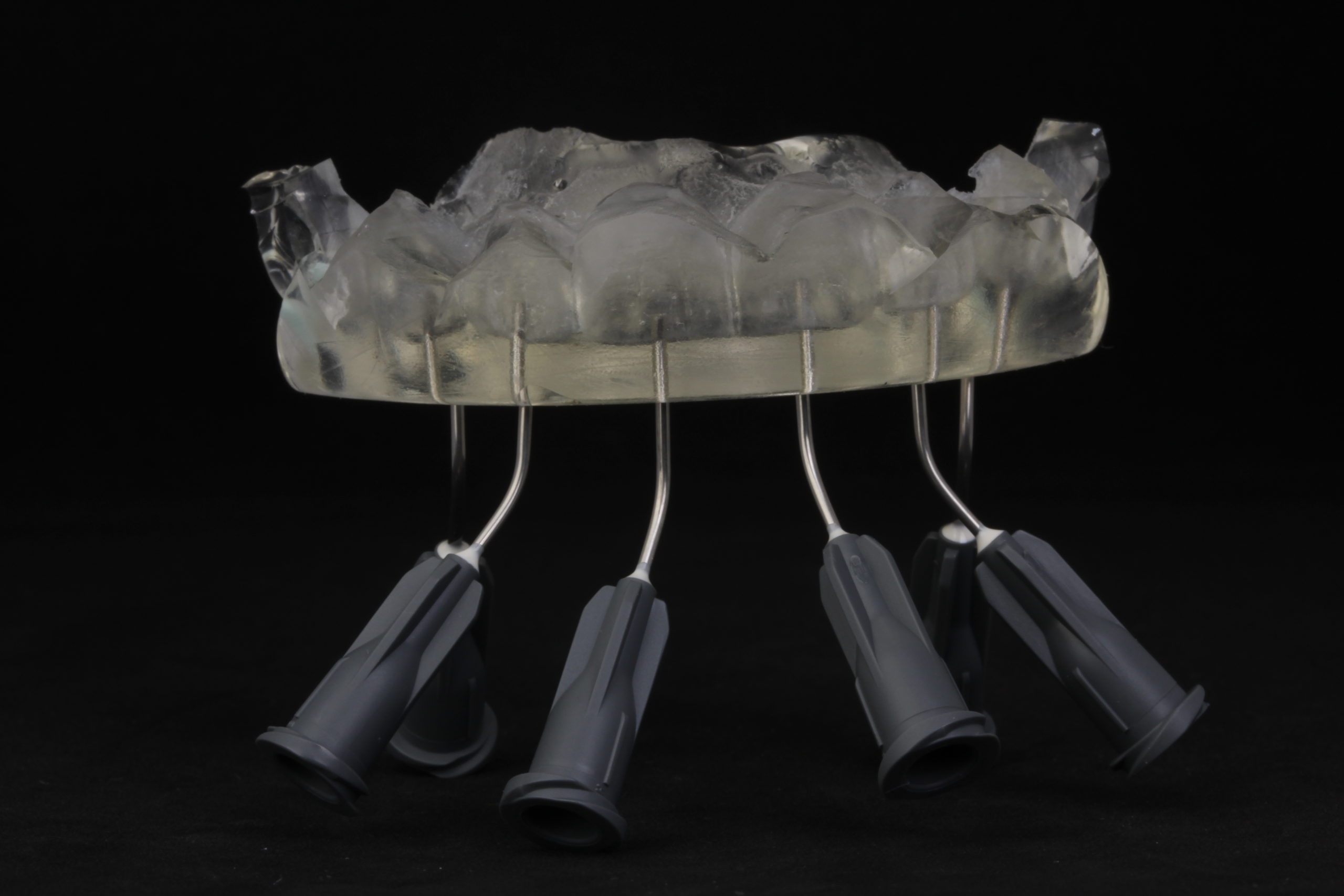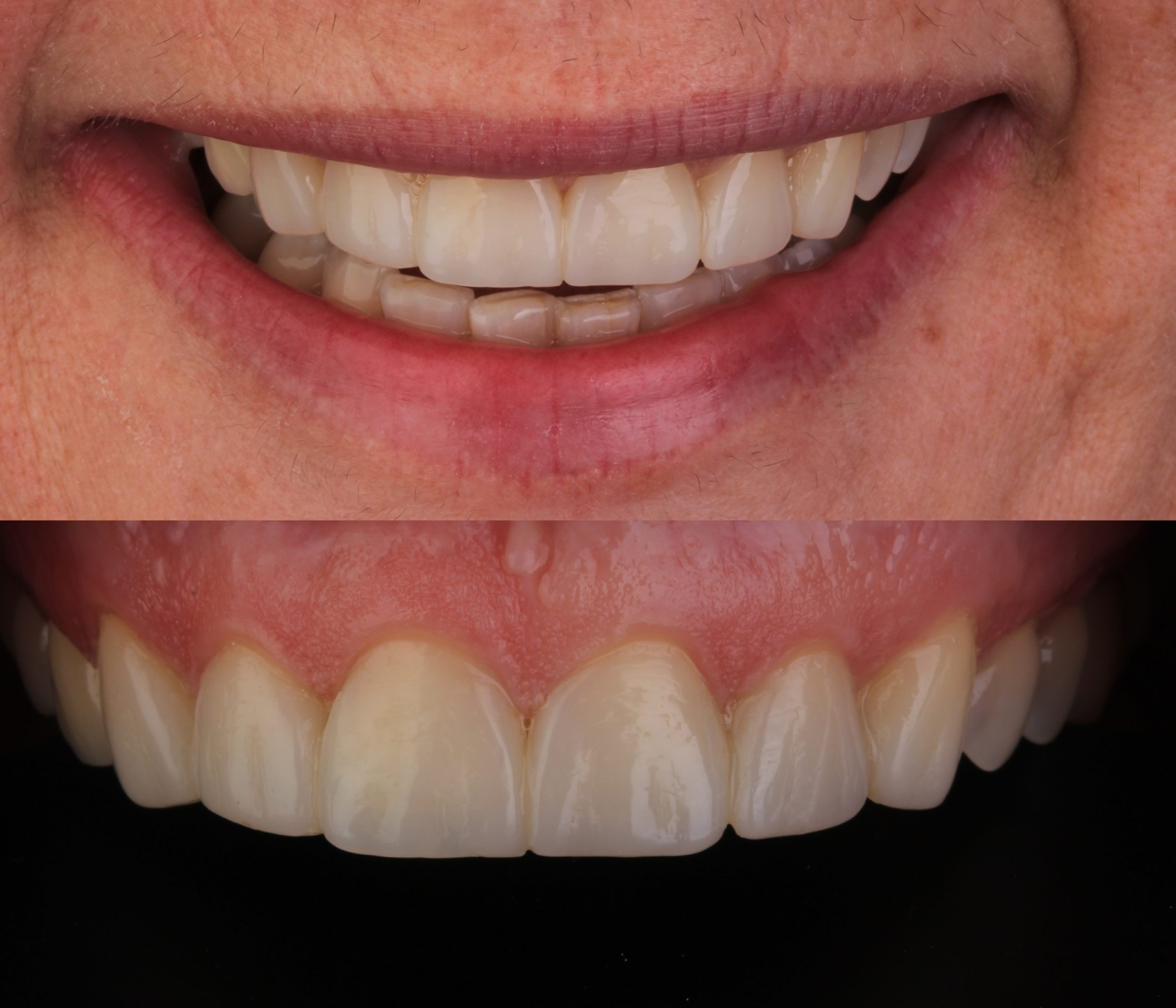Case 2: Injectable Technique – Composite Veneers – Case Report with 6 Months Follow-up
Read in the magazine: [ Click here ]
INTRODUCTION:
Due to the improvement of dental materials on the market, wider indications for their use was described in the literature. Such as newly developed highly filled flowable composites which were recently introduced. Such materials have better mechanical (flexural strength and resistance to wear) and esthetical properties (high polishability, gloss retention and resistance to discoloration) (1-8)
Injectable technique is minimally invasive indirect/direct technique which transforms our planning from the wax-up to final composite restoration with the usage of transparent silicone index and flowable composite. Great advantage of it is that it can be performed minimally invasive without tooth preparation in a totally predictable and precise way. Here I am referring to the predictability of the shape of final restoration because the whole process is planly driven.
It follows simple copy/pasting protocol. It was described many years ago by dr. Terry in his publications. (9-11) Some modifications compared to the original protocol were described as well. (12) From the author’s experience it is a molding concept that can be used in everyday practice with multiple modifications depending from the case to case. In the presented case report, 6 composite veneers were performed on upper anterior teeth for esthetic reasons.
CASE REPORT:
48 years old female, non-smoker patient came to the clinic unsatisfied with the appearance of her smile due to tooth wear of her incisors (Fig1a, 2a, 3a). After functional analysis no major functional problems were detected. Wear was caused by extreme parafunctional laterotrusive bruxomanic movement during the daytime in the past. After the crown on her upper right premolar was recently replaced this movement was disabled. For further analysis, set on intraoral and extraoral photos and videos were taken, as well as a set of impressions, face bow, protrusive, and laterotrusive registrars were recorded.
Casts were mounted in a semi adjustable articulator and planning was performed. Although in this case, oral rehabilitation would be a great treatment option, the patient (who is also a dentist herself) refused that option and wanted only composite veneers. Following main esthetical and functional parameters wax-up was done on upper incisors and canines (Fig 4). Canines were reshaped to ensure proper canine guidance and enough discluding space on incisors in laterotrusive movement of the mandible. Since Injectable technique will be performed which copy morphology from the wax up to final composite restorations, in the wax small details of secondary and tertiary morphology were sculpted.
Based on the wax up silicone index for the mock up was done. After checking the esthetics, function, phonics and other details on the mock up, and the patient confirming she approves our treatment plan we moved to the next step. Based on the same wax up transparent silicone index was done. Cast with the wax up was isolated in cold water for 5 minutes, then, it was well stabilized with some putty stoppers in a non perforated tray which was later on filled with transparent silicone (Exaclear, GC) and the impression of wax up was done. To finish preparation of transparent silicone index tiny channels were drilled on incisal parts with the tip of syringe of flowable composite that will be used later on for the injection of flowable composite. Also, index was cut following gingival lines for easier removal of excess material from the sulcular area (Fig 5).
On the next appointment final restorations were delivered to the patient.
After checking seating of transparent silicone index intraorally, sharp incisal edges of worn dentition were smoothed out (Fig6a). To save up some time 3 teeth at the time will be treated. Every second tooth was isolated with teflon tape, etched (60 seconds) and rinsed (Fig6b, 6c). After ensuring a dry field of work adhesive was applied, dried and polymerized. Silicone index was placed and while holding it stable in the correct position flowable composite (G-aenial Universal Injectable, GC) was injected through the holes on the incisal edge letting excess overflow margins of transparent silicone (Fig 6d). After a short 3 seconds flash polymerization excess was removed with the probe and final light curing was performed, 40 seconds from vestibular and incisal direction. After removal of transparent silicone index, glycerin gel was placed on top of composite veneers and additional 10 seconds of light curing was performed to ensure no oxygen inhibited layer was left on the surface (Fig 6e).
Excess was removed with the use of scalpel blade no12, EVA handpiece burs, fine interdental stripes and fine diamond flame shape polishing burs on low RPM. (Fig 6f) Final polishing was performed with 3m soflex spirals, and combination of diamond polishing paste and cotton wheel on low RPM with low pressure trying not to smoother out existing micromorphology which was captured by the molding process from the wax up (Fig 7).
Same procedure was performed on the next 3 adjacent teeth.
With those 6 veneers patinets smile was improved and lost dental tissue was reconstructed. (Fig 1b, 2b, 3b, 8, 9).
After the procedure, impressions were taken as well as face bow registrar and centric relation for the production of Hard acrylic Michigan splint. Patient was referred to wear a splint every night during the sleep. Patient was recalled after 6 months for maintenance of veneers if needed. No major changes weren’t found. Soft tissue was healthy, no sign of wear nor discoloration were present (Fig 10).
DISCUSSION:
Numerous modifications can be performed with injectable for better final outcome and to get a more natural lookalike appearance of restoration. In this case where veneers were ticker (0,5 mm) I added more details in the wax up. With such topography of the vestibular surface when the light hits the tooth, it creates play of light and shadows which gives more life to our monochromatic restoration (Fig 7 and 8). Different approaches can be used to get polychromatic appearance of restorations with this technique.
For long lasting results proper functional planning needs to be performed to prevent chipping during the daytime and hard acrylic splint is recommended to prevent uncontrolled hard forces during the nighttime. From the author’s experience with both, no chipping nor fractures will occur over the time.
A Great advantage of this technique is that it totally copies the vestibular surface from the wax up. It means primary, secondary and tertiary morphology can be performed extraorally on the wax up, and later on incorporated in final composite veneers such as in this case. It is much easier to get proper tooth morphology in the wax-up (analog or digital) then it is possible to achieve the same result with free hand bonding.
There are a lot more details for different situations clinician needs to pay atention to, to achieve better results that exceed the size of this article. Have in mind this can be a simple and joyful technique but clinician needs to be focused, leaving enough time for the treatment and avoiding any compromises and skipping steps because that is the way to fail.
CONCLUSION:
This is a very promising technique which gives clinicians the opportunity to transfer their plans and technician modelation in a very predictable and precise way to final composite restoration. Although further clinical trials need to be made, with the existing publications on paradigm switch with present materials on the market, by following strict functional parameters clinician can be on the safe side of the road while performing Injectable technique.
REFERENCES:
1. Imai A, Takamizawa T, Sugimura R, et al. Interrelation among the handling, mechanical, and wear properties of the newly developed flowable resin composites. J Mech Behav Biomed Mater. 2019;89:72–80.
2. Sumino N, Tsubota K, Toshiki T, Shiratsuchi K, et al. Comparison of the wear and flexural characteristics of flowable resin composite for posterior lesions. Act Odont Scand 2013;71:820-827.
3. Ujiie M, Tsujimoto A, Barkmeier WW, Jurado CA,Villalobos-Tinoco J, Takamizawa T, Latta MA, Miyazaki M. Comparison of occlusal wear between bulk-fill and conventional flowable resin composites. Am J Dent. 2020 Apr;33(2):74-78.
4. Kitasako Y, Sadr A, Burrow M, Tagami J. Thirty-six month clinical evaluation of a highly filled flowable composite for direct posterior restorations. Australian Dental Journal. 2016;61(3):366-373.
5. Shinkai K, Taira Y, Suzuki S, Kawashima S, Suzuki M. Effect of filler size and filler loading on wear of experimental flowable resin composites. Journal of Applied Oral Science. 2018;26(0).
6. Hirata-Tsuchiya S, Yoshii S, Ichimaru-Suematsu M, Washio A, Saito N, Urata M et al. Two-year clinical comparison of a flowable-type nano-hybrid composite and a paste-type composite in posterior restoration. Journal of Investigative and Clinical Dentistry. 2016;8(3):e12227.
7. Lai G, Zhao L, Wang J, Kunzelmann K. Surface properties and color stability of dental flowable composites influenced by simulated toothbrushing. Dent. Mater. J. 2018;37(5):717-724.
8. Wang RL,Yuan CY, Pan, YX,Tian FC,Wang ZH, Wang XY. Surface roughness and gloss of novel flowable composites after polishing and simulated brushing wear. Zhonghua Kou Qiang Yi Xue Za Zhi. 2017 Apr 9;52(4):243-247.
9. Terry DA, PowersJM. Using injectable resin composite: part one. International dentistry – African edition. 2014; 5(1): 52-62.
10. Terry DA, and JM Powers. Using injectable resin composite: part two. International dentistry – African edition. 2014; 5(1): 64-72.
11. Terry DA, Powers JM, Batz MB. The inverse injection layering technique. J Cosmet Dent 2018;34:42-56.)
12. Geštakovski D. The injectable composite resin technique: minimally invasive reconstruction of esthetics and function. Clinical case report with 2-year follow-up. Quintessence Int. 2019;50(9):712-719.







